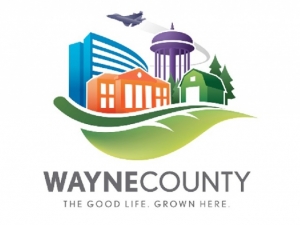County approves flood damage prevention ordinance revisions
By Steve Herring
Published in News on May 17, 2018 11:38 AM

Wayne County commissioners commiserated with the two speakers at Tuesday's public hearing on proposed revisions to the county's flood damage prevention ordinance.
School board member Arnold Flowers said he was told he would need to pay thousands of dollars for engineering studies for a shed for his tractor and to install a service pole on property he owns off Arrington Bridge Road.
Gloria Crowder, speaking on behalf St. Joseph Free Will Baptist Church on Claridge Nursery Road, was concerned about flooding around the church.
Both were told their concerns should be directed to Goldsboro City Council since the properties in question are inside the city's jurisdiction.
The hearing was held before a room packed with county residents, most of whom were there to voice their frustration and anger about the slow pace of Hurricane Matthew disaster relief.
Several spoke during the public comments section of the meeting held prior to the public hearing, but not during the public hearing, which lasted about 15 minutes.
"This ordinance has nothing to do with hazard mitigation grant programs for buyouts," Assistant County Manager Chip Crumpler said. "It has nothing to do with the Community Development Block Grant for disaster relief.
"This simply is an ordinance that is put in place in Wayne County on new construction. It doesn't have any effect on any existing construction. It has to deal with how a house is built if that house is located in a flood hazard."
Do not confuse it with anything that has to do with disaster relief, Crumpler said.
Commissioners had until June 20 to adopt the revised ordinance, but voted 6-0 following the hearing to approve the revisions. Commissioner Joe Gurley was not at the meeting.
The county's new flood insurance studies and flood insurance rate maps also become effective June 20.
The ordinance is mandated by the Federal Emergency Management Agency if the county is to participate in the national flood insurance program, he said.
The ordinance applies to new construction only in the unincorporated areas of the county. The county's municipalities have to adopt their own such ordinances.
"In the past, we have had this in place, this is what makes flood insurance available to our citizens," he said. "We have to have certain standards on new construction that when a house is built, and that house is located in a flood hazard zone, it has to meet certain requirements."
For example, the finished floor must be two feet above base flood elevation, Crumpler said.
"The heating and mechanical and utility equipment that service the house has to be elevated two feet above the base flood level," he said.
If it is a commercial building, flood proofing in lieu of elevation can be used, Crumpler said.
However, the revisions clarify that a local surveyor/engineer must fill out the necessary FEMA paperwork and file it with the local permitting office, he said.
Commissioner Joe Daughtery asked if agriculture is exempt.
It depends on what the building is, Crumpler said.
The ordinance defines what is considered to be a temporary recreational vehicle in a flood zone.
To be considered temporary, a recreational vehicle has to be on site for less than 180 consecutive days or be fully licensed and ready for highway use.
If the tongue and tires have been removed and the vehicle underpinned, it is considered permanent and has to be elevated and must meet all the requirements for new construction.
The changes also address underground tanks in a flood hazard area.
It requires that the tanks be anchored to "prevent flotation, collapse or lateral movement resulting from hydrodynamic and hydrostatic loads during conditions of the design flood, including the effects of buoyancy assuming the tank is empty."
Also, above-ground tanks in flood hazard areas must be elevated to or above the regulatory flood protection elevation "on a supporting structure that is designed to prevent flotation, collapse or lateral movement during conditions of the design flood."
Tank inlets, fill openings, outlets and vents must be at or above the regulatory flood protection elevation or fitted with covers designed to prevent the inflow of floodwater or outflow of the contents of the tanks during a flood.
The proposed ordinance also includes a conversion agreement so that when someone elevates a home, they have to sign an agreement not to convert the lower level into living space.
Violation of the provisions in the ordinance or failure to comply with any of its requirements, including violation of conditions and safeguards established in connection with grants of variance or special exceptions, would constitute a Class I misdemeanor.
Any person who violates the ordinance or fails to comply with any of its requirements shall, upon conviction, be fined not more than $100 or imprisoned for not more than 30 days, or both.
Each day a violation continues is considered a separate offense.
